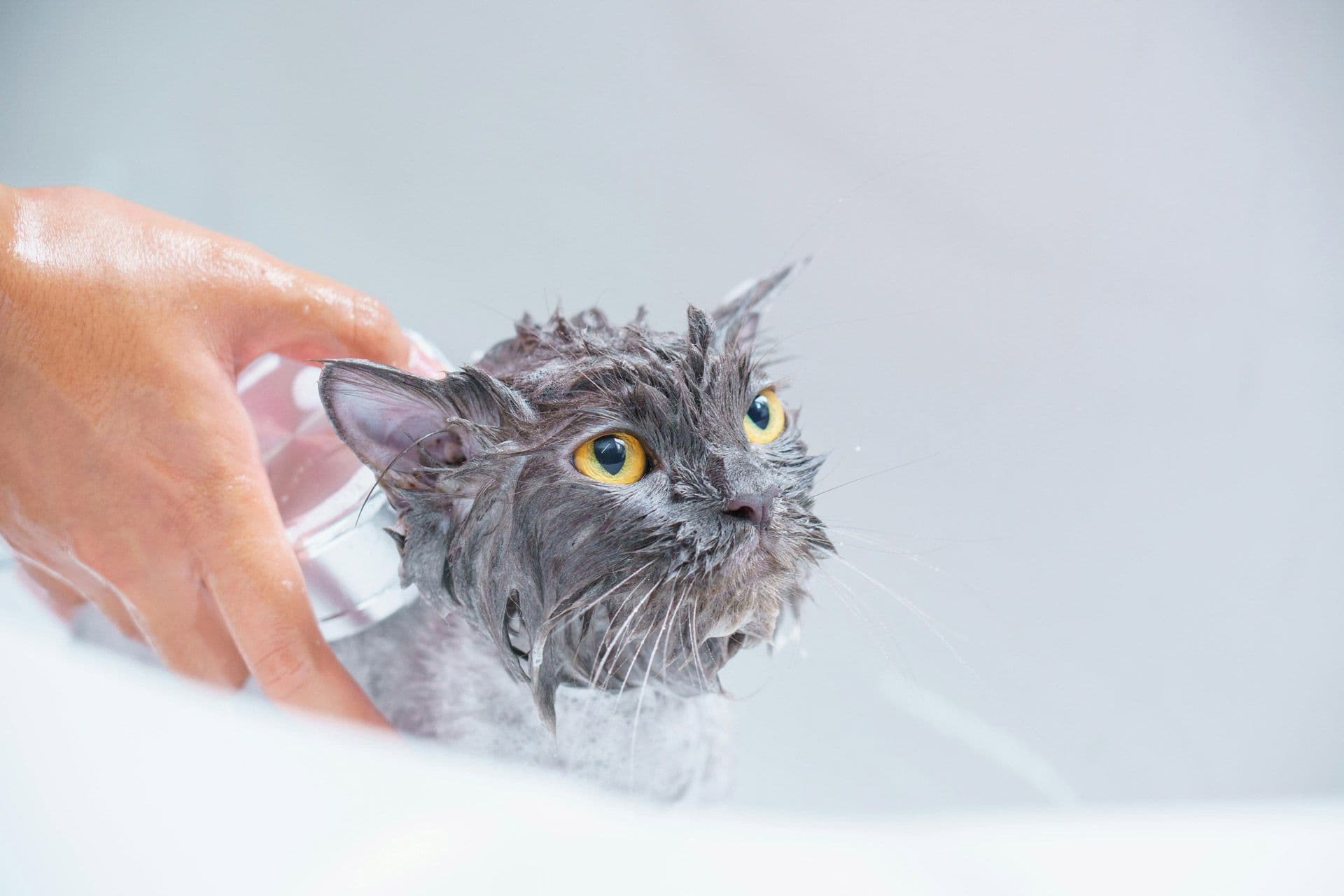Proper grooming is critical to keeping your cat’s skin and coat healthy. Most cats handle their grooming needs just fine on their own, but even the cleanest indoor cat might need a helping hand now and again. If your cat is excessively sticky, stinky, or grubby, you might consider bathing them. How can you safely bathe a cat? Our cat grooming pros are here to help.
Does My Cat Really Need a Bath?
That’s a great question! Many cats go their entire lives without needing a bath. However, some cats do need baths occasionally or regularly.
Your cat might benefit from a bath if:
- They are hairless: Hairless cats produce oil that builds up on their skin, necessitating an occasional bath.
- They have long hair: The density and length of the coat can make routine grooming tough for a cat.
- They are older, arthritic, or obese: Some cats can’t unable to clean properly for physical reasons..
- They have parasites: A cat with fleas might need a soothing bath to eliminate the bugs.
- They’ve gotten into something: A good bath can freshen the coat of a grubby cat.
Prepare to Bathe Your Cat
- Consider using your bathroom or kitchen sink where the bathing action will be at a comfortable height for you. The bathtub can also be appropriate if you have a handheld shower to simplify the rinsing process.
- Use appropriate supplies. Gather your supplies before the bath, including a gentle shampoo formulated for cats, clean and warm towels, cat treats, a non-skid surface, cat ear cleaner, cat eye wipes, a grooming loop, a pet dryer, brushes, and combs.
- Familiarize yourself with the instructions. All products you use should be safe for cats or kittens, and for the best and safest results, you should follow the instructions precisely.
- Keep your cat calm. Use hormone diffusers and high-value treats to keep your cat calm and comfortable.
Finally, brush your cat thoroughly. Knots, tangles, and mats will worsen when water is applied, so untangle your cat's coat as much as possible before bathing.
Bathing Your Cat
The slipperiness of wet porcelain can be uncomfortable for pets. Line the bottom of the sink or tub with a cloth or non-slip mat. Use lukewarm water to keep your cat cozy. Distract your furry friend with high-value snacks: Consider using lickable treats squirted directly on the tub or sink wall to make this easier. Use a grooming loop on the cat’s body (never their neck), if needed, to stabilize your cat and minimize the risk of injury.
Next, wet your cat thoroughly, starting at the ears and working your way back. A sprayer or cup will work best here, and you can use cotton balls to help keep ears dry. Apply shampoo according to package directions and lather your cat well, paying attention to the contours especially under and around the legs, neck, and genital area.
Once your cat has been lathered according to directions, begin the rinsing process. Use ample water to rinse all shampoo suds and any remaining residue from your cat. Leftover shampoo can be drying and irritating. If your cat has long hair, consider adding a cat conditioner once you’ve rinsed, and then rinse again.
Use a grooming wipe to clean your cat’s face and ear cleaner with cotton balls to remove buildup on their ears. Clean, dry towels can help soak up excess water, but they might not be enough to dry your cat. A pet-safe dryer on a low, cool setting can speed the process. After the bath, offer ample treats, toys, and love.
Wash, Rinse … Repeat?
How often does your cat need a bath? Some cats can go their entire lives without a bath. Others might need regular baths. Hairless cats, for example, will likely need a bath every week or every few weeks. Long-haired cats and cats that struggle to groom properly need bathing every month or every other month. If regularly washing your cat sounds like something from a scary movie, that’s okay! Here at Cozy Cat Suites, we offer comprehensive stress-free grooming for your cat. Contact us today to find out more!


